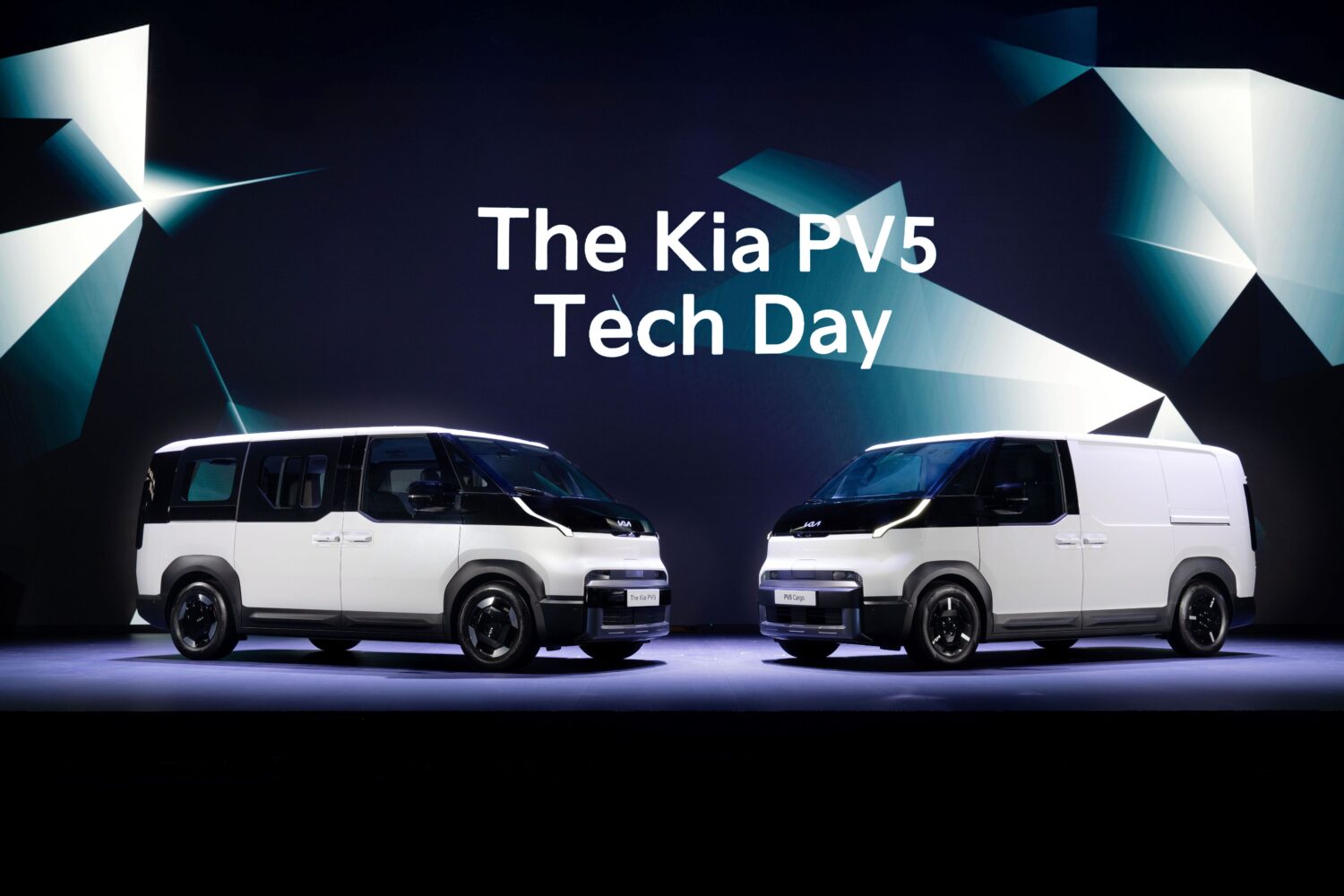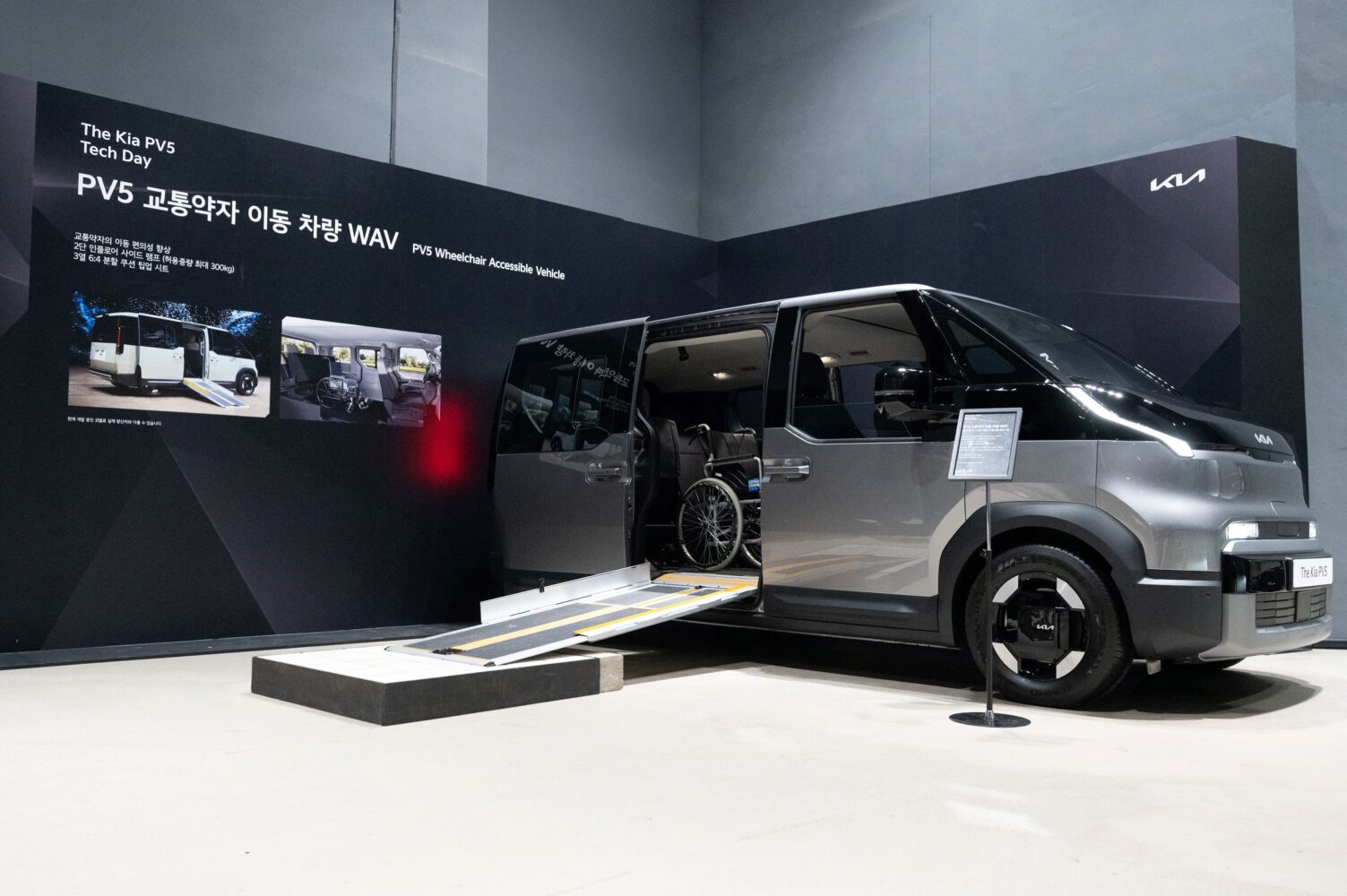Kia has officially launched its first dedicated Platform Beyond Vehicle (PBV), the PV5, marking a shift in how the company approaches commercial mobility. Introduced during the Kia PV5 Tech Day in Gwangmyeong, the vehicle reflects a deliberate push to offer practical, scalable solutions for businesses through modular design, real-world usability, and an expanding digital ecosystem. While positioned as part of Kia’s sustainability roadmap, the PV5 is built more for versatility and low operating cost than for flash or novelty.
The PV5 is built on Hyundai Motor Group’s Electric-Global Modular Platform for Service (E-GMP.S), which adapts the company’s EV foundation for commercial use. The platform leverages a modular structure that standardizes core systems—batteries, motors, suspension, and more—to streamline development and enable horizontal scalability. A flexible chassis layout allows Kia to push the driver’s seat forward, creating more interior space, while safety is addressed through structural reinforcements and intelligent battery packaging that prioritizes protection without compromising serviceability.
A key focus of the PV5 is adaptability. Kia has introduced what it calls the Flexible Body System, which breaks the vehicle into interchangeable structural modules. Rather than building unique variants from the ground up, Kia can now mix and match body components—like tailgates, side panels, and roof heights—resulting in up to 16 potential configurations from a relatively small number of shared parts. This production method enables everything from short-wheelbase passenger vans to high-roof cargo haulers without extensive retooling.

Kia’s attention to customer input is more than a marketing tagline in this case. The company directly collaborated with more than 120 global business clients during development, gathering specific feedback that shaped design elements like eliminating the front passenger seat for extra cargo room, using stain-resistant materials, and integrating walk-through access in certain configurations. The result is a product that caters to business users with clear operational needs, rather than speculative features.
The PV5 is available with three battery options—ranging from a 43.3 kWh LFP pack to a 71.2 kWh NCM unit—paired with a 120 kW motor generating 250 Nm of torque. These choices allow businesses to tailor performance and range according to their use case, whether that’s last-mile delivery or regional transport. Kia has also built in features to ease ownership over time, including simplified maintenance through modular brackets and an Android-based infotainment system that supports real-time vehicle monitoring via fleet management tools.
Interior space and usability remain strong selling points. With its compact footprint and extended wheelbase, the PV5 delivers surprising capacity: up to 5.1 cubic meters in high-roof cargo models and a tight 5.5-meter turning radius for maneuverability in urban settings. Passenger variants accommodate flexible seat layouts, while low step heights and large doors support easy access for both goods and people. The platform has also been designed with accessibility in mind, as seen in the Wheelchair Accessible Vehicle (WAV) variant, which includes side ramps and a spacious, secure interior.
Kia is also addressing the growing demand for aftermarket conversions by launching a dedicated PBV Conversion Center. Vehicles can be ordered pre-configured for conversion, with non-essential components removed and core systems prepped for integration. To support third-party upfits, Kia provides a global portal for technical documentation and real-time assistance, aiming to offer factory-level quality for bespoke business solutions.
Production of the PV5 has now begun, starting with the Passenger and Cargo Long models. Additional versions will roll out over time, with larger models—like the PV7 and PV9—scheduled to arrive in 2027 and 2029, respectively. Taken together, this strategy signals Kia’s ambition to establish PBVs not as niche offerings, but as a long-term growth category grounded in scalability, cost control, and actual customer needs.
Rather than chasing headlines with experimental concepts, Kia has opted for grounded utility. The PV5 isn’t trying to reinvent transportation—it’s trying to refine it for the people who use it every day.







